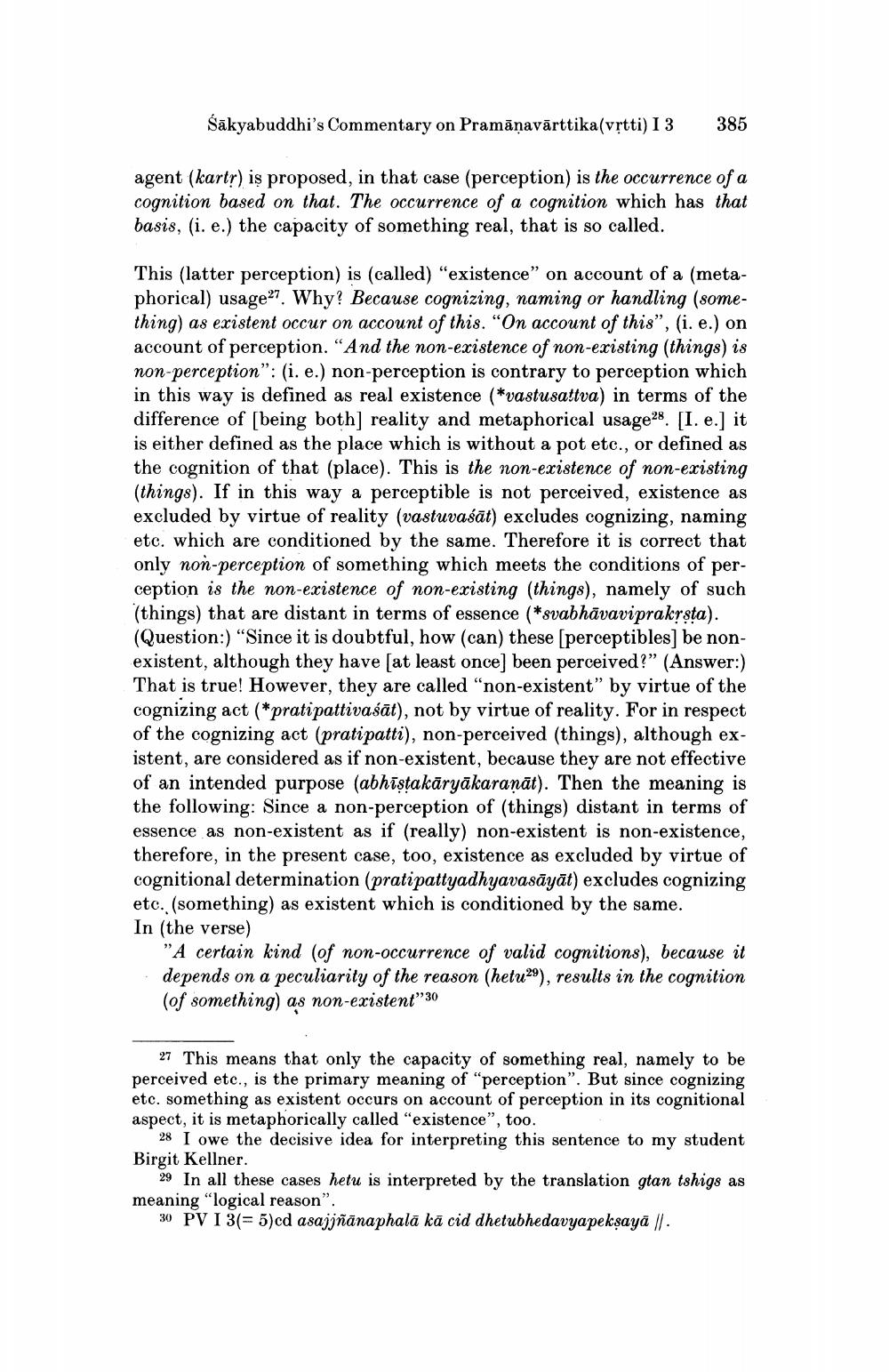Book Title: Sakyabuddhis Commentary On Pramanavarttika I 3 And Its Vrtti Author(s): Ernat Steinkellner Publisher: Ernat Steinkellner View full book textPage 7
________________ Śākyabuddhi's Commentary on Pramāņavārttika(vrtti) 13 385 agent (kartr) is proposed, in that case (perception) is the occurrence of a cognition based on that. The occurrence of a cognition which has that basis, (i. e.) the capacity of something real, that is so called. This (latter perception) is (called) "existence" on account of a (metaphorical) usage27. Why? Because cognizing, naming or handling (something) as existent occur on account of this. "On account of this”, (i. e.) on account of perception. “And the non-existence of non-existing (things) is non-perception": (i. e.) non-perception is contrary to perception which in this way is defined as real existence (*vastusattva) in terms of the difference of [being both] reality and metaphorical usage28. [I. e.] it is either defined as the place which is without a pot etc., or defined as the cognition of that (place). This is the non-existence of non-existing (things). If in this way a perceptible is not perceived, existence as excluded by virtue of reality (vastuvaśāt) excludes cognizing, naming etc. which are conditioned by the same. Therefore it is correct that only non-perception of something which meets the conditions of perception is the non-existence of non-existing (things), namely of such (things) that are distant in terms of essence (*svabhāvaviprakrsta). (Question:) “Since it is doubtful, how (can) these [perceptibles] be nonexistent, although they have at least once] been perceived?” (Answer:) That is true! However, they are called "non-existent” by virtue of the cognizing act (*pratipattivaśāt), not by virtue of reality. For in respect of the cognizing act (pratipatti), non-perceived (things), although existent, are considered as if non-existent, because they are not effective of an intended purpose (abhīstakāryākaranāt). Then the meaning is the following: Since a non-perception of things) distant in terms of essence as non-existent as if (really) non-existent is non-existence, therefore, in the present case, too, existence as excluded by virtue of cognitional determination (pratipattyadhyavasāyāt) excludes cognizing etc. (something) as existent which is conditioned by the same. In the verse) "A certain kind (of non-occurrence of valid cognitions), because it depends on a peculiarity of the reason (hetu29), results in the cognition (of something) as non-existent"30 27 This means that only the capacity of something real, namely to be perceived etc., is the primary meaning of "perception". But since cognizing etc. something as existent occurs on account of perception in its cognitional aspect, it is metaphorically called "existence", too. 28 I owe the decisive idea for interpreting this sentence to my student Birgit Kellner. 29 In all these cases hetu is interpreted by the translation gtan tshigs as meaning "logical reason". 30 PV I 3(= 5)cd asajjñānaphalā kā cid dhetubhedavya peksaya l.Page Navigation
1 ... 5 6 7 8 9
